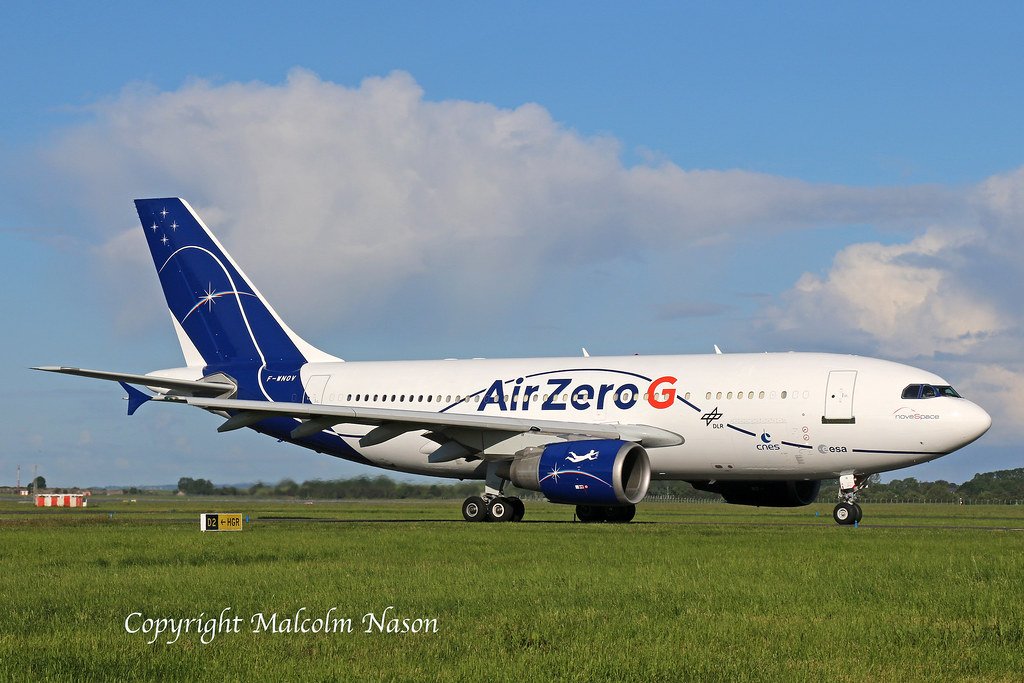About the Zero-G Flight
An Airbus A310 is in use by Novespace, a subsidiary of the French Space Agency (CNES). The organization was established in 1986 for gravitational studies. Earlier, it used to be the Airbus A300. But, now Airbus A310 is in use for zero gravity or zero-g flights. German and French research agencies are part of this research. The exciting part of the research is for using older technology like A-310 is phenomenal.
Modified Interior of the Airbus A310

Read More: Why PIA failed to replace the Airbus A310 fleet?
The interior of the A310 has been heavily modified due to the nature of flights. However, minor changes have been made to the flight deck. Except for the two additional accelerometers, the flight deck is the same as any A310. In the cabin, white padding and guide rails keep free-floating participants safe in the front three-quarters of the aircraft. The rear of the plane includes the original seats. The participants or the passengers use the seat for take-off and landing.
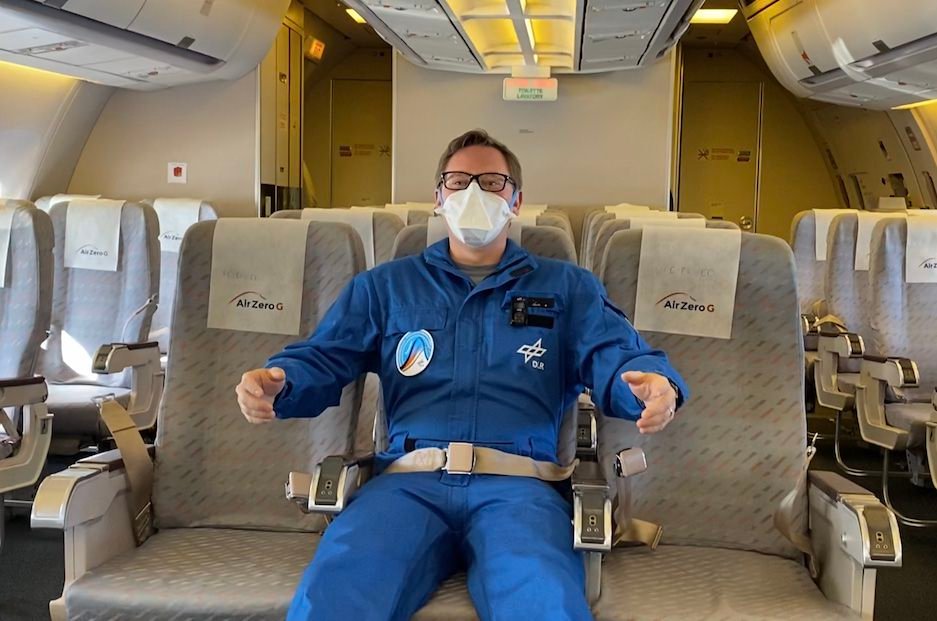
Injection (The Concept behind Zero ‘G’ on an Airbus A310)
The concept can be understood by holding a ball in one hand and tossing it into your other hand. It is a replicated parabolic flight in miniature. The ball begins its ballistic phase and falls back to earth. The idea is the same with the A310, but instead of two hands and a ball, there are two engines and an airframe. ‘Injecting’ the aircraft into an arc of an orbit around the earth maximizes the time of weightlessness. The aircraft climbs first and then dives. Instead of leveling off after the climb, the aircraft goes into a dive and the weightlessness gets doubled.
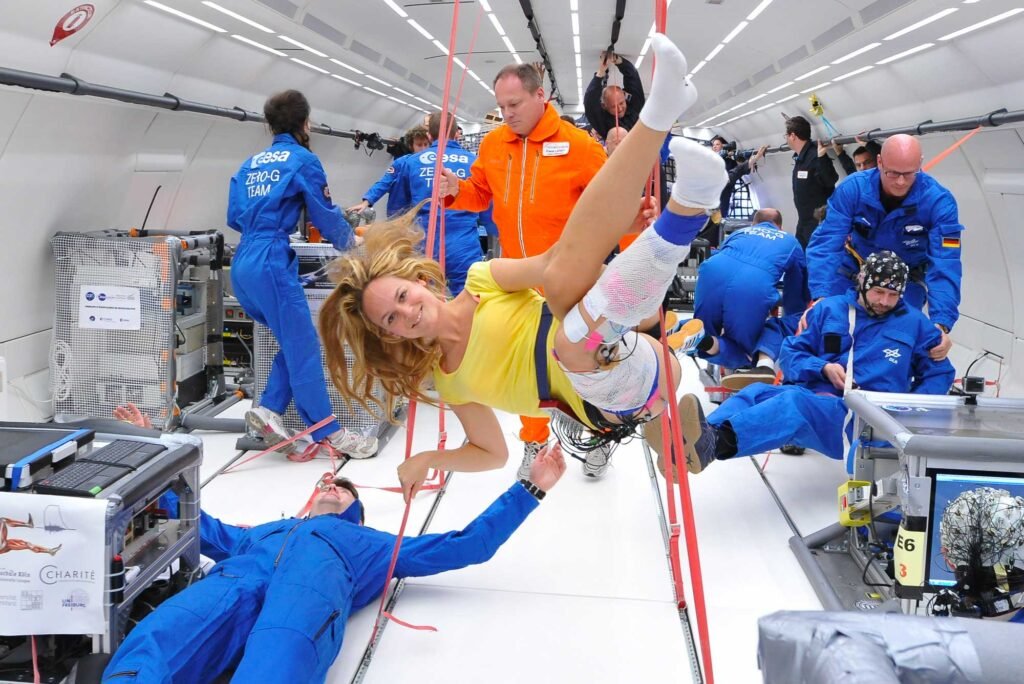
Flight Profile of A-310
The flight profile of the A-310 follows a defined envelope where it first goes up with an almost 50 degrees angle of attack. Instead of leveling off straight, the aircraft goes into deep dive however, the time of each phase of flight is not too long. From level flight, the pilots enter the parabola by pulling aft on the control column and raising the nose of the A310 to +50 degrees within 21 seconds. After 24 seconds, the aircraft is injected into “orbit” and weightless begins for 22 seconds. As soon as this time lapses, the pilots bring the nose of the aircraft down from +50 degrees to -42 degrees before pulling it back for 26 seconds, and then finally bringing the aircraft back to level flight.
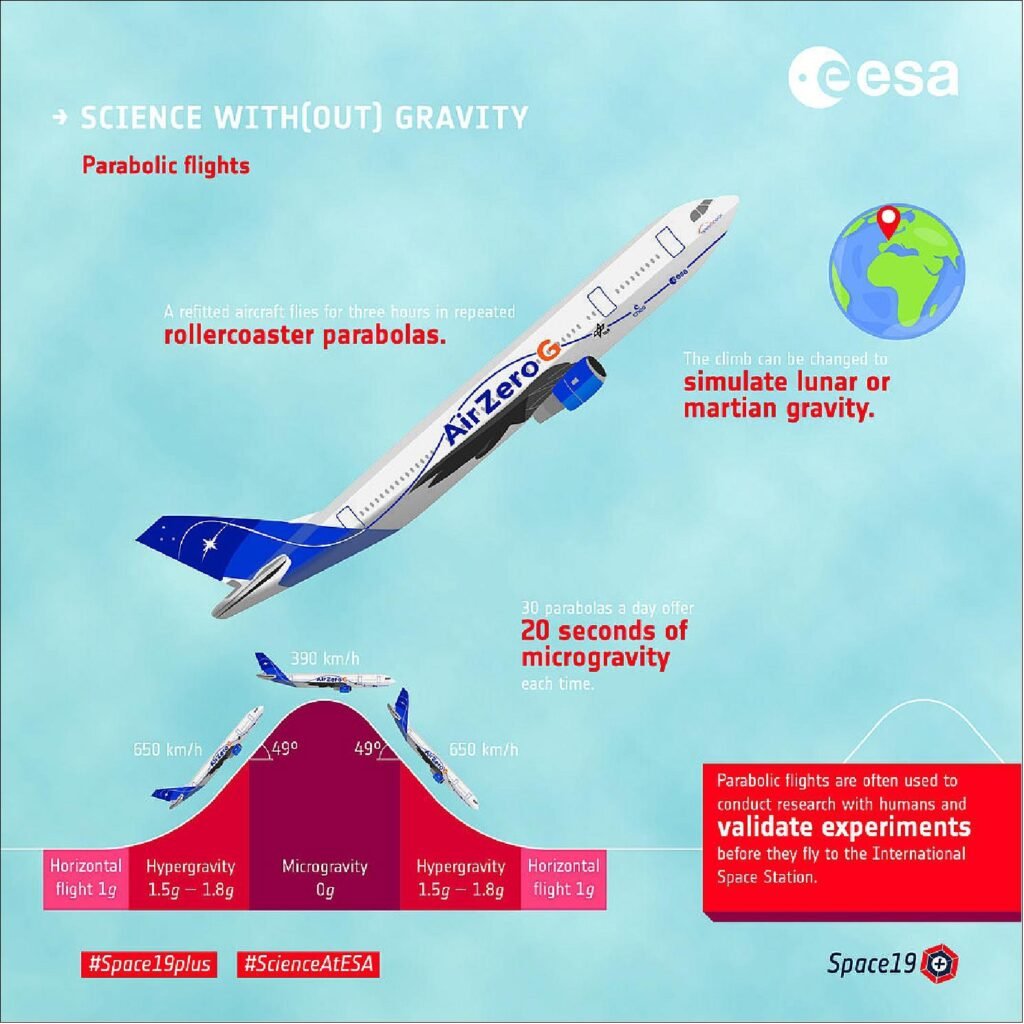
For better visualization, the reference flight profile of an Airbus A-300 is shown below:
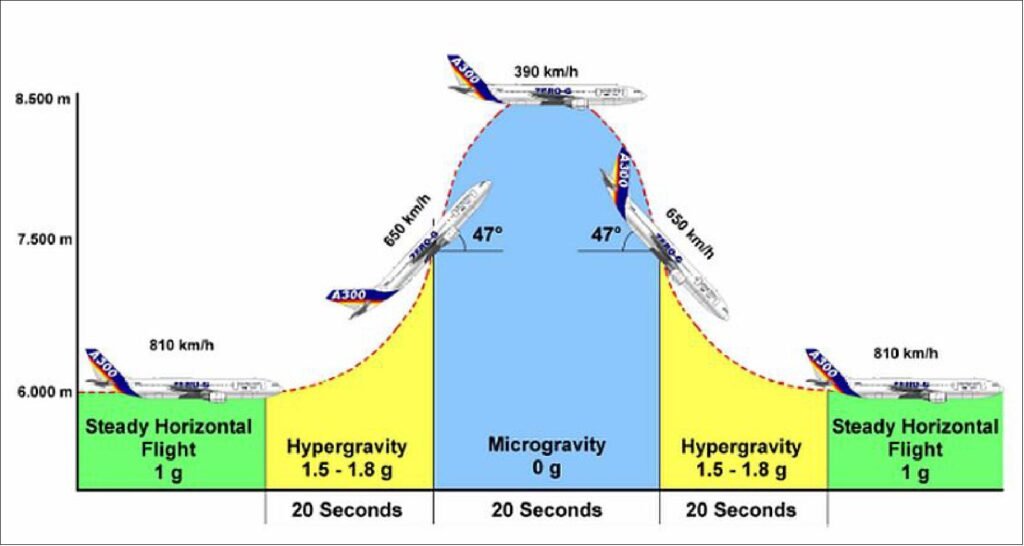
The Flight Experience
The flight experience of a Zero-g flight is unique yet a bit discomforting as it exhausts the body and forces us to use air-sick bags often provided to each person on board. However, the onboard doctor keeps a check on every passenger; gives them a fresh bag, and then floats away.
Written by guest writer, Faisal Bashir
